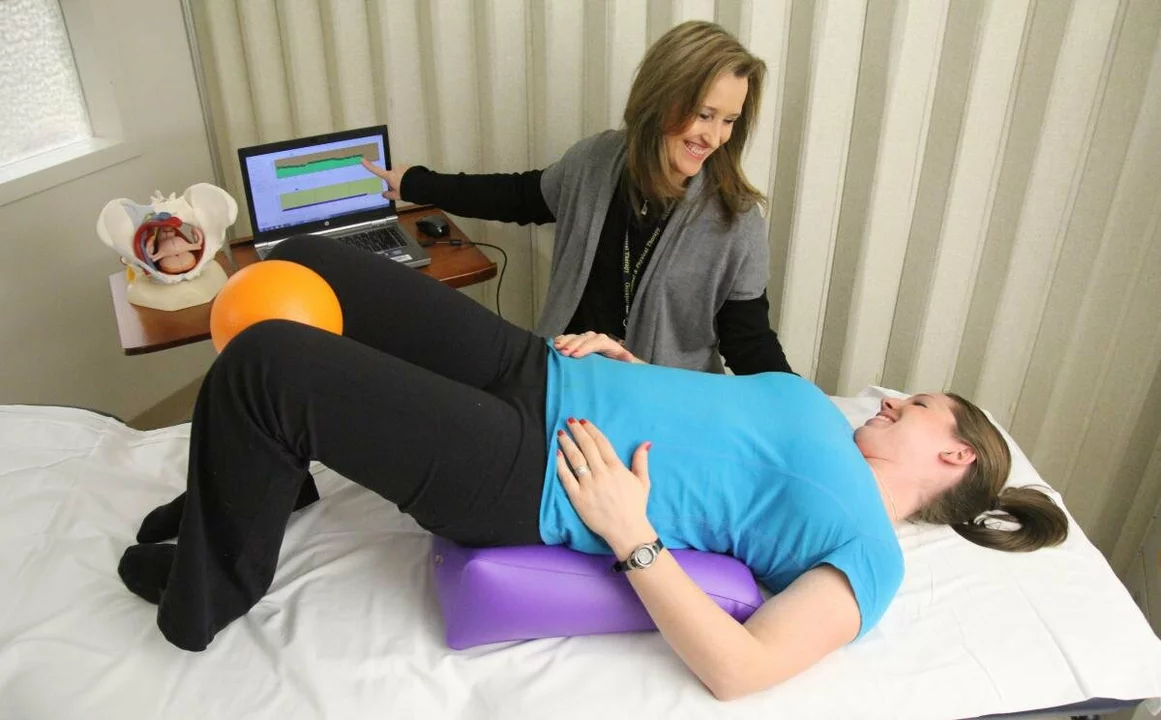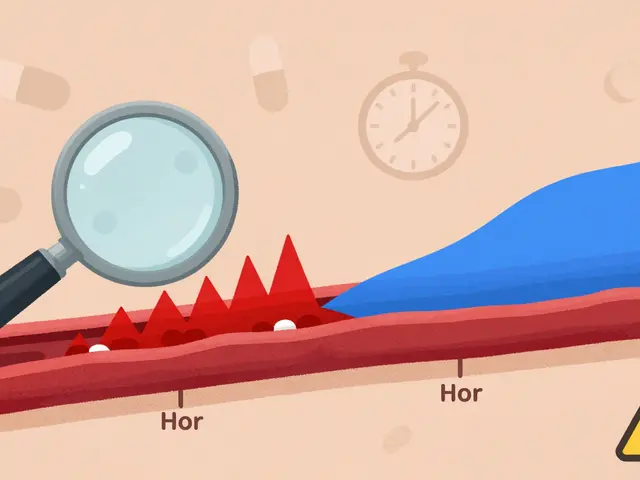Understanding Urinary Tract Spasms
Before diving into the benefits of biofeedback therapy for urinary tract spasms, it is essential to understand what urinary tract spasms are. Urinary tract spasms, also known as bladder spasms, are involuntary contractions of the muscles in the bladder. These contractions can cause a sudden and intense urge to urinate, even when the bladder is not full. They can be quite uncomfortable and sometimes painful, leading to a decreased quality of life for those who experience them.
There are several potential causes of urinary tract spasms, including urinary tract infections, bladder stones, interstitial cystitis, and neurological conditions such as multiple sclerosis or Parkinson's disease. In some cases, the cause may be unknown. Regardless of the cause, it is important to find effective treatment options to manage the spasms and improve overall well-being.
Introduction to Biofeedback Therapy
Biofeedback therapy is a non-invasive treatment option that has been shown to be effective in managing a variety of conditions, including urinary tract spasms. During a biofeedback session, sensors are placed on the body to monitor and provide real-time feedback on various physiological functions, such as muscle activity, heart rate, and skin temperature. This information is then displayed on a screen, allowing the patient to see how their body is responding to different stimuli and make adjustments accordingly.
When used to treat urinary tract spasms, biofeedback therapy focuses on helping patients gain control over their pelvic floor muscles, which play a crucial role in bladder function. By learning to consciously relax and contract these muscles, patients can reduce the frequency and intensity of spasms and improve their overall bladder control.
Reducing the Frequency and Intensity of Spasms
One of the primary benefits of biofeedback therapy for urinary tract spasms is its ability to help patients reduce the frequency and intensity of spasms. Through the use of biofeedback, patients can learn to recognize when their pelvic floor muscles are contracting involuntarily and consciously work to relax them. Over time, this increased awareness and control can lead to a significant reduction in the number of spasms experienced, as well as a decrease in their intensity.
Reducing the frequency and intensity of spasms can not only improve a patient's overall comfort and well-being but also decrease the risk of complications associated with chronic urinary tract spasms, such as urinary incontinence and bladder damage.
Improving Bladder Control
Another significant benefit of biofeedback therapy for urinary tract spasms is improved bladder control. As patients learn to recognize and control their pelvic floor muscles, they become better equipped to manage their bladder function. This improved control can lead to fewer accidents and a decreased reliance on incontinence products, such as pads or adult diapers.
Better bladder control can also have a positive impact on a patient's social and emotional well-being, as it reduces the anxiety and embarrassment associated with urinary incontinence and allows for greater freedom and independence.
Non-Invasive and Drug-Free Treatment Option
Biofeedback therapy is a non-invasive and drug-free treatment option, making it an appealing choice for many patients. Unlike surgical interventions or medications, biofeedback therapy does not carry the risk of side effects or complications. This makes it a particularly attractive option for those who may be hesitant to undergo surgery or take medications due to potential risks or interactions with other medications.
Furthermore, biofeedback therapy can be used in conjunction with other treatment options, allowing patients to tailor their treatment plan to best suit their individual needs and preferences.
Reducing the Need for Medications
By helping patients gain control over their pelvic floor muscles and improve their bladder function, biofeedback therapy can often reduce or eliminate the need for medications used to manage urinary tract spasms. This can be particularly beneficial for patients who may be experiencing side effects from their current medications or those who are concerned about potential drug interactions.
It is essential to note that patients should always consult with their healthcare provider before making any changes to their medication regimen.
Cost-Effective Treatment Option
While the initial cost of biofeedback therapy may seem high, it is important to consider the potential long-term savings associated with this treatment option. By reducing the frequency and intensity of spasms, improving bladder control, and potentially eliminating the need for medications, biofeedback therapy can lead to significant cost savings over time.
Moreover, as patients gain control over their bladder function, they may also experience a decreased reliance on incontinence products, further contributing to cost savings.
Improved Quality of Life
Perhaps the most significant benefit of biofeedback therapy for urinary tract spasms is the potential for an improved quality of life. By helping patients manage their symptoms effectively, biofeedback therapy can lead to increased comfort, better bladder control, and a newfound sense of freedom and independence.
As a result, patients may find that they are better able to engage in the activities they enjoy and experience a greater overall sense of well-being and satisfaction with their lives.







15 Comments
Adam Dicker April 29, 2023
Hey folks, if you're battling those nasty bladder spasms, biofeedback could be your game‑changer! It empowers you to take charge of your pelvic floor, turning panic into confidence. Trust the process, stay consistent, and you'll see the urge melt away. Let's crush those spasms together!
Molly Beardall April 30, 2023
Honestly, this article reads like a marketing brochure-sooo over‑hyped!!!
Brian Pellot April 30, 2023
Biofeedback therapy offers a hands‑on approach that lets patients literally see their muscle activity in real time.
When you watch the pelvic floor on screen, the abstract feeling of a spasm becomes a concrete target you can train.
Over weeks of consistent sessions, many report a noticeable drop in how often the sudden urge hits.
This reduction isn’t just a statistical win; it translates into fewer midnight bathroom trips and less anxiety.
Because the technique is non‑invasive, there’s no surgical scar or medication side‑effect to worry about.
You also keep full control over the pace of your progress, adjusting exercises as your confidence grows.
For people juggling work, family, or school, the flexibility of biofeedback fits nicely into a busy schedule.
Moreover, the data you collect can be shared with your urologist, making appointments more productive.
Patients often find that the sense of empowerment fuels other healthy habits, like staying hydrated and doing regular pelvic stretches.
The cost may seem high at first glance, but when you factor in the savings from fewer incontinence products, the investment pays off.
Insurance plans are increasingly recognizing its value, so it’s worth checking your coverage options.
If you’re hesitant about technology, remember that the sensors are gentle and the interface is designed for everyday users.
A supportive therapist will guide you through each step, ensuring you’re never left guessing.
In my experience, the combination of visual feedback and guided breathing creates a powerful feedback loop.
Give it a try, stay patient, and you might just rediscover the freedom you thought was lost.
Patrick McCarthy May 1, 2023
Sounds cool I think it could help a lot but need more info
Geraldine Grunberg May 2, 2023
I love how biofeedback combines technology, education, and personal empowerment, making it a holistic approach, and it seems especially beneficial for those with chronic spasms, right?
Elijah Mbachu May 3, 2023
I've seen a few patients who were skeptical at first, but once they started the sessions they felt a real change. The visual feedback really helps them understand what their muscles are doing. It’s not a miracle cure but it’s definitely a tool that can make a big difference. I think it’s definately worth a try before jumping on meds.
Sunil Rawat May 4, 2023
Biofeedback is like a video game for your bladder. You see what’s happening and you learn to control it. It’s simple, safe and can help a lot.
Andrew Buchanan May 5, 2023
The non‑invasive nature of biofeedback makes it an attractive option for many patients. It also allows clinicians to tailor treatment based on objective data.
Krishna Chaitanya May 6, 2023
Wow, this therapy feels like a miracle for bladder control!
diana tutaan May 7, 2023
The article glosses over the fact that not all clinics have the proper equipment and training. Results can vary widely depending on therapist expertise. Readers should be aware of these limitations.
Sarah Posh May 7, 2023
It’s encouraging to see approaches that empower patients rather than just medicate them. Biofeedback offers a pathway to regain confidence in daily life. With consistent practice, many can experience lasting improvement. Keep hopeful and keep exploring options that work for you.
James Knight May 8, 2023
Honestly this sounds like another fad that’ll fade once the hype dies. Too many promises, not enough solid proof.
Ajay D.j May 9, 2023
While skepticism is healthy, many users report genuine relief after regular biofeedback sessions. It might be worth a trial under a qualified therapist.
Dion Campbell May 10, 2023
One must consider the epistemological underpinnings of such interventions before lauding them as panaceas. Nonetheless, the modality does possess a modicum of empirical support.
Burl Henderson May 11, 2023
Your point is well‑taken, Dion. From a systems‑biology perspective, biofeedback integrates neuromuscular feedback loops, which can be modeled to predict efficacy. Incorporating such data analytics could further legitimize its clinical adoption.